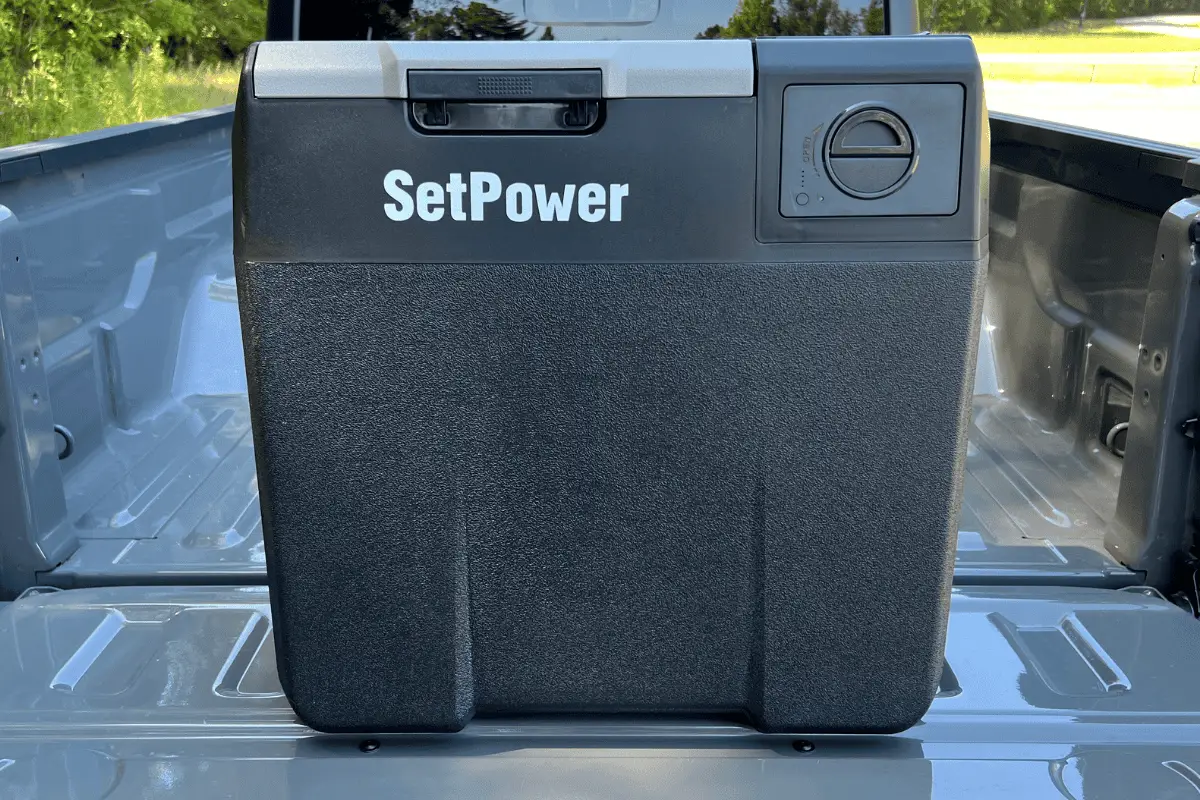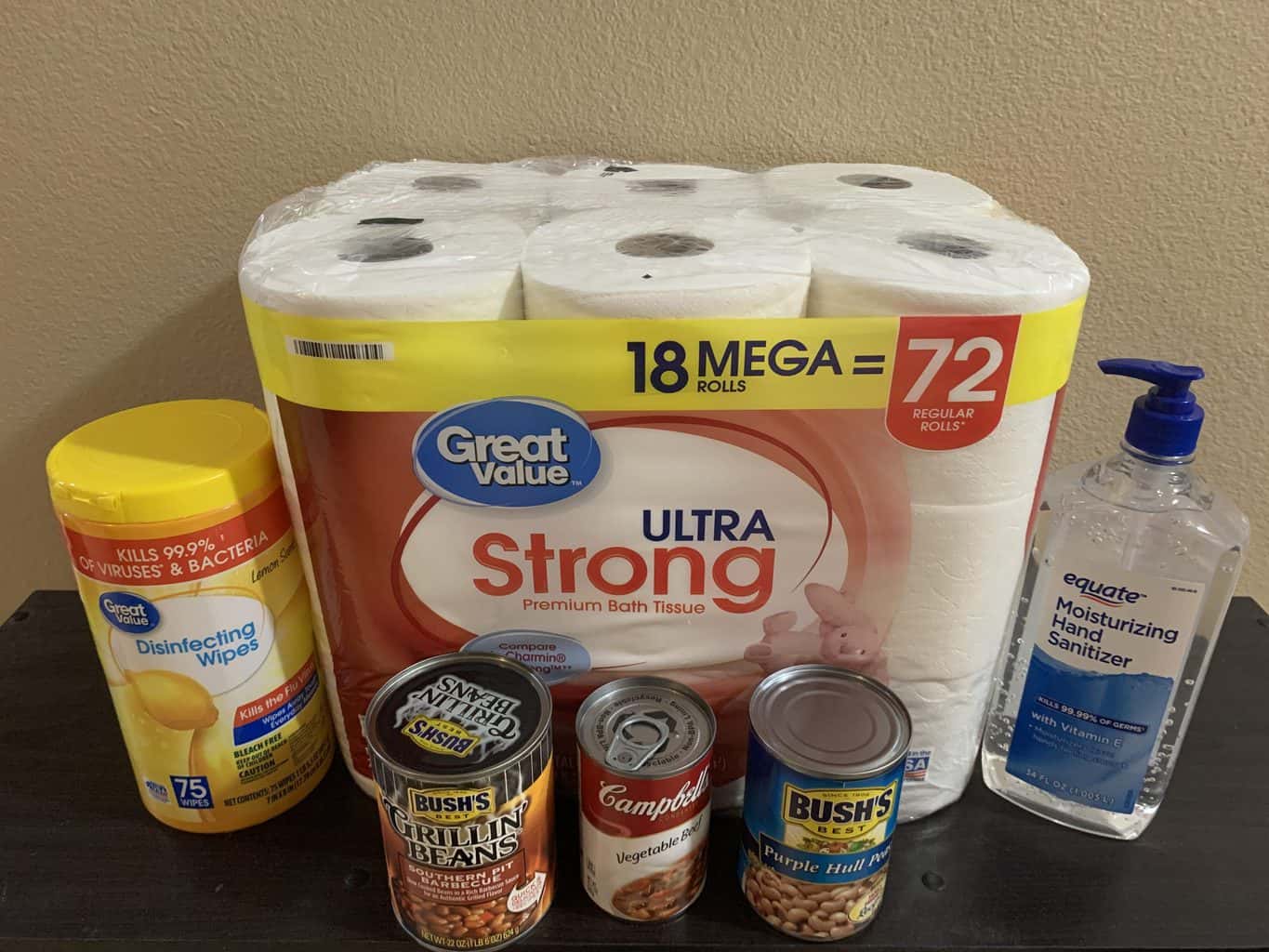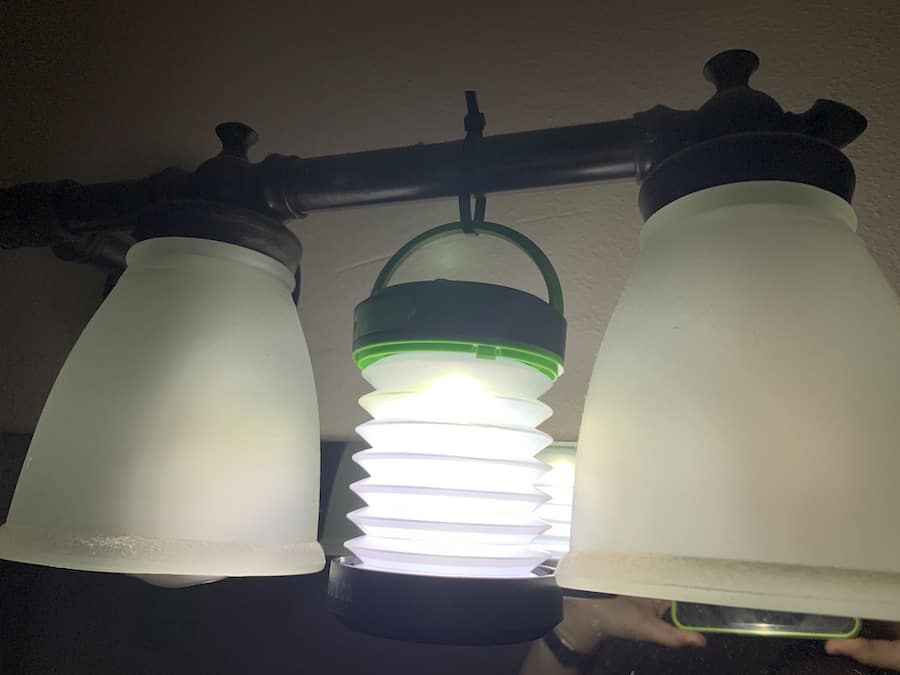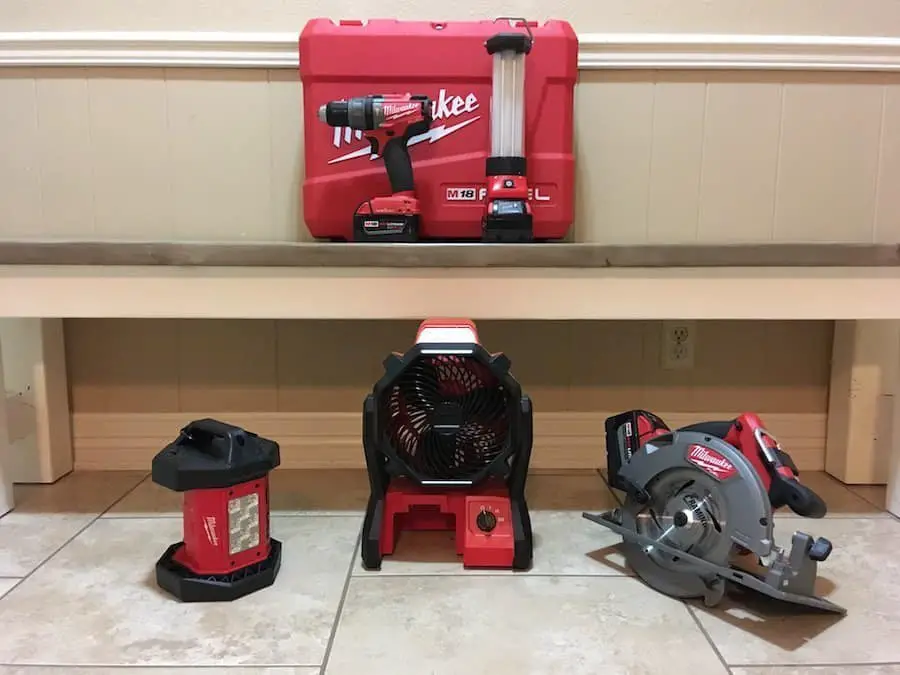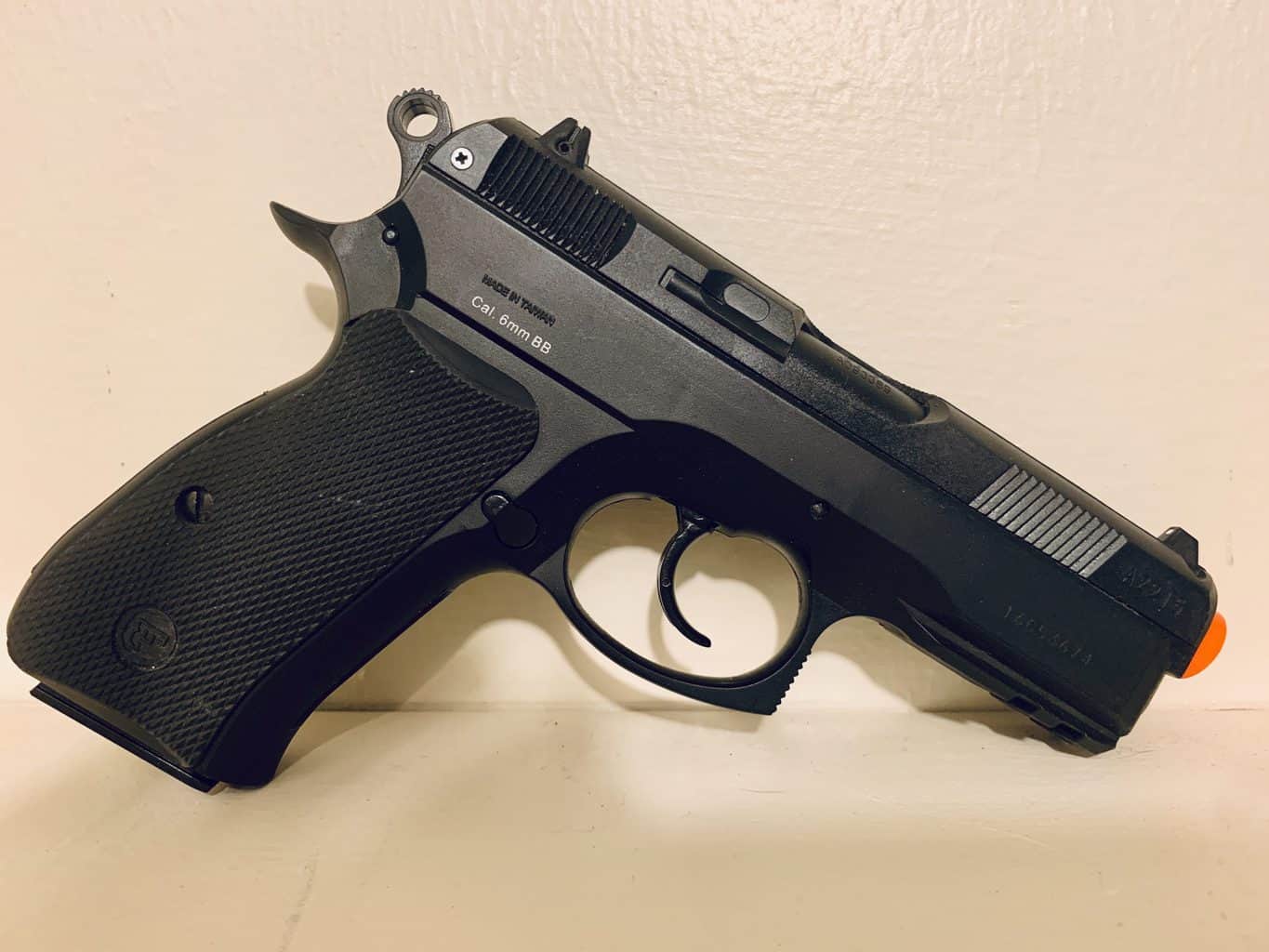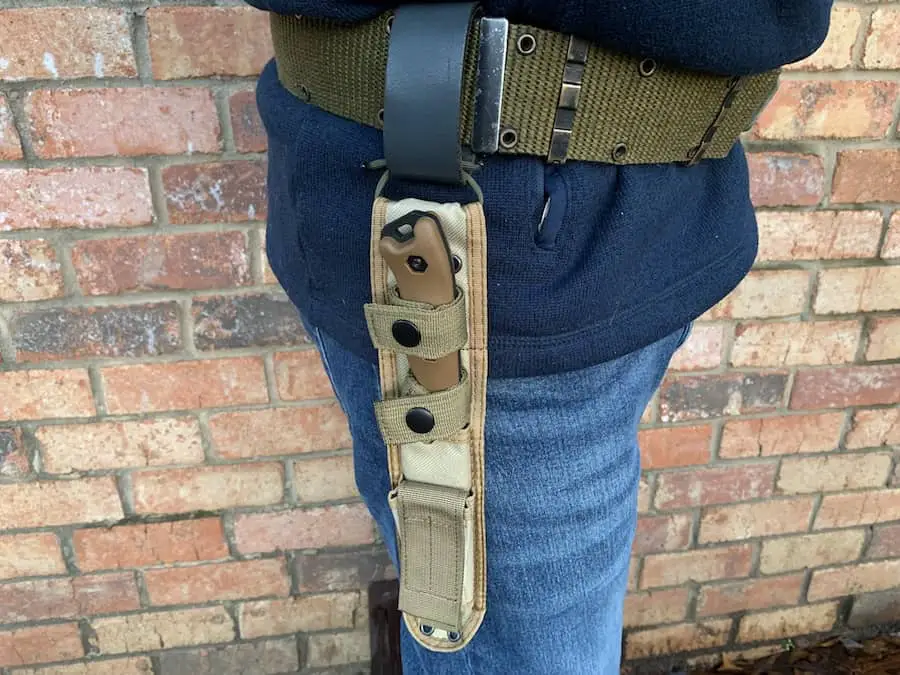Office Emergency Kit Checklist
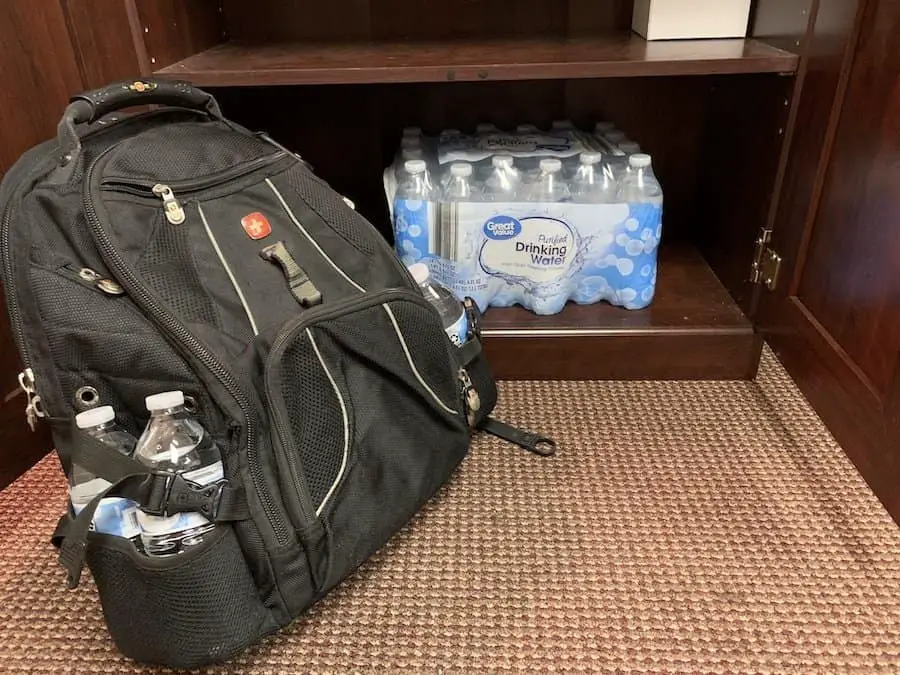
Our jobs are an important part of our lives. They allow us to put food on our table, gas in our cars, pay our mortgage, and do many other things. As such, we spend a ton of time at work. The average American will spend 90,000 hours at work over the course of their life. Since we spend so much time at work, it makes sense to build an office emergency kit.
An office emergency kit should include the following items:
- Water/Water Filter
- Shelf Stable Food
- Medications/First Aid Items
- Flashlight/Chem Light
- Batteries
- Phone Charger and Battery Bank
- Change of Clothes and Shoes
- Personal Protective Gear
- Mylar Blanket
- Radio
- Whistle
- Tool Kit
- Plastic Sheeting
- Poncho
The purpose of an office emergency kit should be twofold. First, it should give you basic resources to stay comfortable if you are unable to leave your office for a couple of days. The most likely reason for this would be a weather event, such as a blizzard. Second, your office emergency kit should be able to take the place of a vehicle get home bag if you can’t access your vehicle. Even if you do still have access to your vehicle, the contents of your office emergency kit can complement what is in your vehicle kit.
Here are some items that you should include in your Office Emergency Kit:
Office Emergency Kit Container
What you keep your office emergency kit in is something that you should put some thought into. It should be good quality, blend in well at your office, and be something that you can carry comfortably. Although I prefer a backpack, a messenger bag may blend in better in some areas. Most importantly, it should be large enough to hold the items in your kit.
Think of your office emergency kit as a miniature bug out bag designed specifically to be kept at the office. It should be kept out of sight but still be accessible enough that you can grab it and go in seconds.
Water

Water is an essential part of any emergency kit. Unfortunately, you will not be able to keep all of your bottled water in your office emergency kit backpack. If you tried, it would be really heavy and cumbersome. However, store around 3 or 4 bottles in your bag with the rest of your kit so that you will have some if you need to get out quickly.
In addition, keep 1 or 2 cases of bottled water in your office emergency kit. You can place them under your desk or split them between a refrigerator and other places, like the back of a filing cabinet. If you use bottled water regularly, be sure to purchase enough water each week to ensure you have enough set aside for 2 or 3 days.
Food
Every office emergency kit should include something to eat. If you are unable to leave your office, it is very likely that the power will be out as well. This means no refrigerator or microwave. Be sure that any food items you store in your office are non-perishable and don’t require heating. Items such as granola bars are great choices for an office emergency kit.
MRE’s would be a good solution as well, especially if you have to shelter in place at your office for an extended period of time. Since they include everything you need to prepare the food (except water), they would allow you to have a hot meal, even without power.
On the subject of food, it is always a good idea to keep some disposable utensils around. Even if you don’t use them for an emergency, having a clean fork readily available is always nice if you get your lunch back to the office and realize you forgot to pick up a fork.
Medications
Keep a couple of day’s worth of medication at your office. This includes prescriptions as well as any over-the-counter medications that you take regularly. I have seasonal allergies, so I try to keep Claritin nearby. If you are prescribed any controlled substances, be sure they are secured and out of sight. They should also be in their prescription bottle to avoid trouble.
Even if you don’t take medications regularly, we are all susceptible to occasional headaches, stomachaches, or bouts of nausea. Because of this, keep some pain relievers and stomach medication in your office emergency kit. If you use contacts, include some lens solution and a lens case in your kit as well. Even if you don’t normally use some of the items, they can help build relationships with coworkers when they are feeling under the weather.
Here is a list of medications to keep in your office emergency kit:
- Pain Relievers (Acetaminophen: Tylenol, Ibuprofen: Advil, Aspirin)
- Note: Aspirin can stop a heart attack if taken early enough.
- Antacids (Tums)
- Nausea and Diarrhea Medication (Pepto Bismol, Immodium)
- Antihistamines (Claritin, Zyrtec, Benadryl)
First Aid
Although some consider medications to be first aid items, I am going to separate the two for this list. For the purposes of an office emergency kit, I consider first aid supplies to be wound care items. Your office first aid kit should be able to take care of everything from a paper cut to a gunshot wound. These injuries could be caused by acts of violence, extreme weather, or even more mundane injuries like accidental cuts.
The first aid portion of your office emergency kit should include:
- Bandaids
- Triple Antibiotic Ointment
- Tourniquet
- Gauze
- Povidone Iodine
- Sterilizing Wipes
- Nitrile Gloves
- Cold Compress
- Tweezers
Flashlight
Always keep a spare flashlight in your office emergency kit. While you should have a good flashlight with you as part of your EDC, having an extra flashlight stored in your kit will keep you covered in case you forget your regular light at home. It will also give you another light to use so that you can save your regular flashlight’s batteries.
Chemical Light Stick
Chemical light sticks are excellent items to keep in an office emergency kit. They provide light for several hours, which will allow you to preserve your flashlight’s battery.
Batteries
Devices are useless without power, so have spare batteries for any device you would use in an emergency. These include flashlights, emergency radios, as well as any medical devices that require batteries to operate.
Phone Charger and Battery Bank
Communication is an important part of our daily lives and is even more important in an emergency. Having a phone charger and battery bank will allow you to stay in contact with your loved ones for a longer period of time, even if the power goes out where you work.
Click here now to check out my article, How to Charge a Phone During a Power Outage.
Comfortable Shoes
I don’t know about you, but I wouldn’t want to deal with an emergency wearing dress shoes. To prevent having to trek home in loafers or heels, keep a pair of comfortable shoes in your office emergency kit. They should be suitable for walking a long distance in case you need to travel on foot.
Change of Clothes
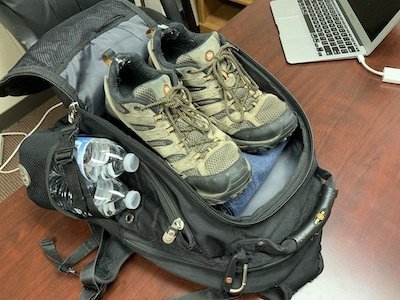
Your office emergency kit should also contain a comfortable change of clothes. This includes a good pair of socks. Your change of clothes should be suitable for both on-foot travel and being holed up in an office.
Be sure that the clothing in your office emergency kit is appropriate for the climate where you are working. For example, during winter, keep warm clothes in your kit. If it rains a lot where you are, have some rain boots handy.
Dust Mask
Adding a dust mask to your office emergency kit will help protect your lungs in the event of a fire or terrorist attack. Many survivors and rescue workers from the 9/11 attacks later contracted various forms of cancer, which were the result of them breathing in dangerous particles when the buildings fell.
N95 masks will filter out many dangerous contaminants. They are also inexpensive, readily available, and easy to store. However, even with a dust mask, it is a good idea to clear the area as soon as possible.
While N95 masks are great to store in case of an emergency, they don’t do nearly as good of a job filtering contaminants as professional-grade respirators do. Don’t hang around to see what is going on. Clear the area to save your lungs and stay out of the way of first responders.
Eye and Ear Protection
You also want to protect your eyes from dust and debris and your ears from loud noises, so include decent eye and ear protection in your kit as well.
Gloves
During a fire or other emergency that could damage your building, you may have to navigate your way through an inhospitable maze of hot and jagged debris. Your hands will be what you will use most to clear things out of your way, so make sure they are protected with thick heavy-duty gloves.
*Note: In a fire, be sure to do a touch test on doorknobs before you open a door. Do this without gloves so that you will be able to tell if the knob is hot.
Water Filter
A water filter is always a good thing to have around. Filter bottles, such as those made by Sawyer and Berkey allow you to fill them with water and drink directly from them. This would be helpful if the tap still had water coming out, but you were concerned about it being contaminated. For stationary office use, a small gravity filter such as the Berkey Go or Travel Berkey would be very useful.
Mylar Blanket
If you are trapped at your office during winter, it may get pretty cold. Mylar blankets take up very little space and reflect a large amount of your body’s heat back to you.
Radio
A battery-operated radio can help you stay in contact with the outside world during an emergency. Choose one that has a dynamo (hand crank) charger that you can use if your battery goes dead.
Whistle
In some situations, a whistle may be your only way to communicate to first responders in an emergency. Many whistles are much louder than the human voice and require very little effort to use. If you are trapped due to a tornado or other emergency, a whistle could save your life.
Tool Kit
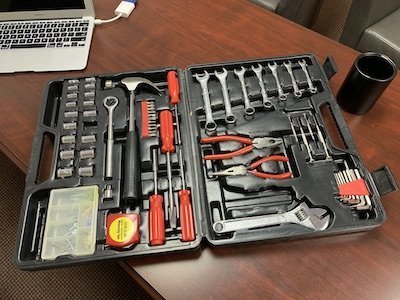
Although you may not need a toolset in an office too often, when the need arises having one can save you a lot of trouble. An office toolset should be able to do small jobs, such as hanging pictures and fixing desks. It should also have items in it to help you escape from a building and supplement tools in your vehicle in case you have car trouble. I recommend keeping the following items in your office emergency kit’s toolset:
- Good Quality Multitool (Swisstool, Leatherman Wave)
- Claw Hammer
- Screwdrivers
- Small Pry Bar
- Ratchet
- Socket Set
- Wrenches
- Duct Tape
Plastic Sheeting
When I was a school teacher, one thing that we prepared for was the possibility of a chemical spill or some sort of biological contaminant. Surprisingly, chemical accidents are fairly common. In my hometown, we had a chemical leak that required numerous houses, business, and an apartment complex to need to be evacuated.
If for some reason you can’t evacuate, covering your air ducts and sealing doors and windows with plastic sheeting can provide some protection. Just be sure that you turn off the air conditioning or heater to prevent the system from pumping contaminated air into your office or building.
Poncho
One more item that I would recommend keeping in your office emergency kit is a poncho. It will help keep you dry if you have to travel on foot to get home in the rain.
Conclusion
Although the items above are what I would recommend keeping in an office emergency kit, your kit may differ. Be sure that whatever you put into it is customized for your own unique needs. If I have left anything out that you feel should be in every office emergency kit, please add it in the comments below.

